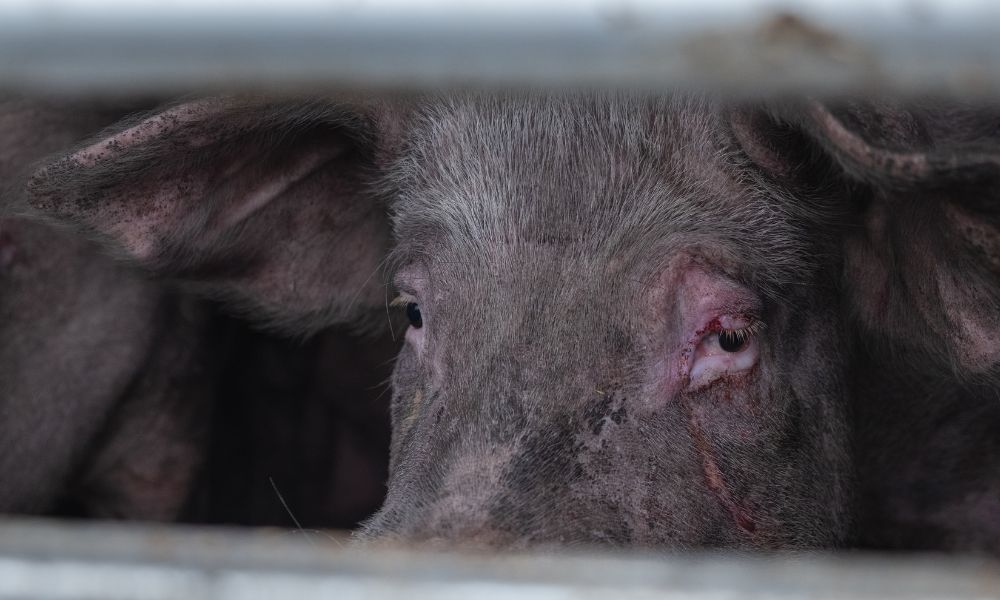Animal transport regulations in the U.S., Australia, Canada, New Zealand, and the EU are failing to protect billions of animals, according to a new study published in Royal Society Open Science which assessed regulations for the five regions.
Most farmed animals will be transported at some point in their life. It is a terrifying, painful, and often dangerous experience — especially in extreme temperatures, when traveling long distances, or if the animals are already unhealthy.
Researchers investigated four major risk factors associated with live animal transportation — fitness for transport, journey duration, climatic conditions, and space allowances — and identified the relating regulations in each region.
All five regions were found to be in need of serious improvements.
The authors cited fitness for transport as the “the single most important (animal welfare) issue,” as unfit animals will suffer most and are at greatest risk of dying in transport. The U.S. had the least restrictive laws regarding animal fitness. The laws in the other four regions generally did not allow transport of unfit animals — although the language used to describe unfit animals was vague.
Vague language was common in the regulations for all five regions studied. For example, Australia’s laws regarding climate stated that “reasonable steps” must be taken to minimize the effects of “extreme weather conditions” – but no metrics were provided.
Regulations about the duration of travel varied by animal and country, but regulations commonly allowed for animals to be hauled for days — sometimes without rest stops, food, or water.
Some countries’ regulations addressed the overcrowding of animals during transport. In the U.S., non-binding guidelines are given addressing the space each farmed animal should be provided in transport, but these recommendations are not legally required.
The common thread across all five regions is that regulations tend to lack specific, binding language or metrics and fail to adequately prioritize animal welfare.
These findings are troubling, but sadly not surprising.
A 2022 investigation found that approximately 20 million chickens, over 330,000 pigs, and almost 170,000 cows die each year in the U.S. while traveling to slaughterhouses due to exhaustion, overheating, dehydration, and injuries. They estimated another 800,000 pigs are unable to walk once they reach their final destination.
More needs to be done to protect these sensitive animals.
The authors of the Royal Society Open Science study provide recommendations for improvements to transportation regulations based on recent science to improve animal welfare.
To speak up for animals and end cruel live animal exports in the EU, please sign our petition.








